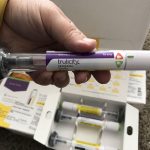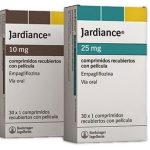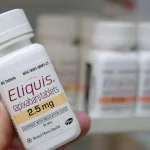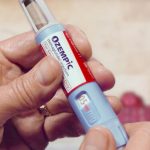Is There A Cheaper Alternative To Restasis?
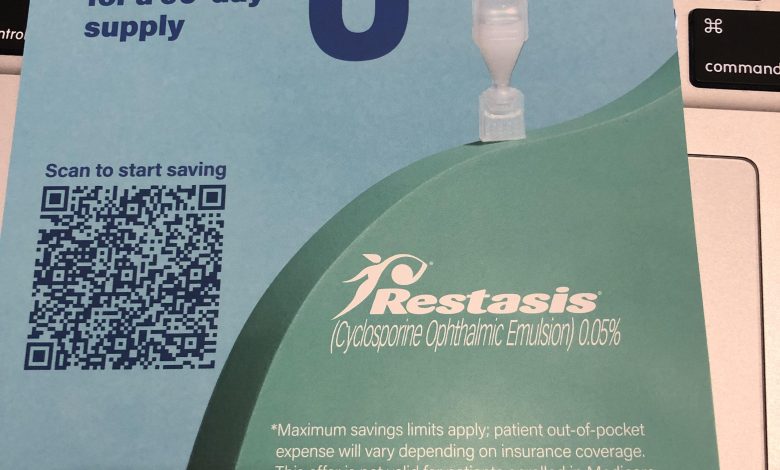
Managing chronic dry eye can take a toll on finances. Chronic dry eye is a condition that occurs when the eyes do not produce enough tears or when the tears evaporate too quickly. This can lead to symptoms such as burning, stinging, redness, and blurred vision.
There are several treatment options for chronic dry eye, including over-the-counter eye drops, prescription medications, and procedures such as punctal plugs or meibomian gland expression. These treatments can be costly, especially if they need to be used on a long-term basis.
In addition to the cost of treatment, chronic dry eye can also lead to indirect costs such as missed work or decreased productivity. This can further impact a person’s financial situation. In this article, we shall be looking at Restasis eye drops, the cost of treatment, and possible alternatives.
What is Restasis?
Restasis eye drop is a prescription medication used to treat chronic dry eye. It contains cyclosporine, an immunosuppressant drug that helps reduce inflammation in the eyes and increase tear production. Chronic dry eye is a condition where the eyes do not produce enough tears or the tears evaporate too quickly, leading to irritation, discomfort, and potential damage to the surface of the eye. Restasis eye drop is typically used twice daily and can take several months to see full benefits.
However, as a brand-name medication, Restasis eye drops can impact your finances as they can be quite expensive compared to other eye drops that are available in generic form.
The cost of Restasis can vary depending on a variety of factors, including your insurance coverage and the pharmacy you use. Without insurance, Restasis can cost several hundred dollars for a one-month supply. Even with insurance, you may be responsible for a significant co-pay or deductible, which can add up over time.
How Much Does Restasis Cost?
The cost of Restasis can vary depending on several factors, such as location, insurance coverage, and pharmacy. Without insurance, the average retail price of a 30-day supply of Restasis can range from $600 to $700.
However, many insurance plans may cover all or a portion of the cost of Restasis. Patients can check with their insurance provider to determine their coverage and copay amount.
Additionally, there may be manufacturer discounts or savings programs available for eligible patients. The manufacturer of Restasis, Allergan, offers a savings card that can provide up to $300 in savings per prescription for eligible patients. Patients can visit the Restasis website or speak with their healthcare provider to learn more about available savings programs.
Is Restasis Eye Drop Worth the Cost?
Yes, clinical studies have shown that Restasis can help improve symptoms of chronic dry eye, such as dryness, burning, and itching. In one study, patients who used Restasis experienced a significant reduction in dry eye symptoms compared to those who used a placebo.
However, it’s important to note that Restasis may not work for everyone, and some people may experience side effects such as burning or stinging in the eye or changes in vision. It’s also important to follow your doctor’s instructions carefully when using Restasis and to continue using it as prescribed, even if you don’t notice an immediate improvement in your symptoms.
Overall, Restasis can be an effective treatment option for many people with chronic dry eye, but it’s important to discuss your individual situation with your doctor to determine if it’s the right choice for you.
Is There A Cheaper Alternative To Restasis
Yes, there are cheaper alternatives to Restasis for many people with chronic dry eye. Restasis contains the active ingredient cyclosporine, which is also available in generic form.
Generic cyclosporine eye drops are generally less expensive than Restasis. Some common generic versions of cyclosporine eye drops include Ikervis, Cequa, and Xiidra. Your doctor or pharmacist can help you determine which alternative is right for you based on your individual needs.
In addition, there are also over-the-counter eye drops that can help alleviate symptoms of dry eye. Artificial tears, lubricating eye drops, and gels can help provide temporary relief from dry eye symptoms. However, these products do not treat the underlying cause of dry eye and may need to be used frequently throughout the day.
To manage the financial impact of chronic dry eye, it is important to explore all treatment options and discuss the costs and benefits with your healthcare provider. Some insurance plans may cover the cost of certain treatments, and there may be assistance programs available for those who qualify. It may also be helpful to practice good eye hygiene habits, such as taking breaks from computer screens and using humidifiers in dry environments, to potentially reduce the need for costly treatments.
Do Restasis Alternatives Cause More Side Effects?
While there are several alternatives to Restasis available, including Xiidra (lifitegrast), Cequa (cyclosporine), and over-the-counter artificial tears, the potential for side effects varies among these options.
Each medication has its own unique set of potential side effects, and the severity of these side effects can vary from person to person. For example, Xiidra may cause eye irritation, blurred vision, and altered taste sensation, while Cequa may cause eye pain, eye redness, and blurred vision. Over-the-counter artificial tears are generally considered safe but may cause temporary burning or stinging in the eyes.
It’s important to talk to your healthcare provider about the potential side effects of any medication you are considering and to discuss any concerns you may have. Your healthcare provider can help you determine which medication is right for you based on your individual needs and medical history.
What Are The Available Discount Programs For Restasis?
There are several discount programs available for Restasis that may help reduce the cost of the medication. Here are a few examples:
1. Restasis Savings Card: The manufacturer of Restasis, AbbVie, offers a savings card that can help reduce the cost of Restasis by up to $300 for a 90-day supply. Eligible patients can download the card from the Restasis website or ask their healthcare provider for more information.
2. Prescription Assistance Programs: There are several prescription assistance programs available that may offer discounts or financial assistance for Restasis. Patients can check with the Partnership for Prescription Assistance or NeedyMeds to see if they qualify for any of their programs.
3. Medicare and Medicaid: Patients who are enrolled in Medicare or Medicaid may be able to get Restasis at a reduced cost or for free, depending on their income and other eligibility criteria. Patients can check with their healthcare provider or the Centers for Medicare and Medicaid Services (CMS) for more information.
4. Pharmacy Discount Programs: Some pharmacies offer discount programs for prescription medications, including Restasis. Patients can check with their local pharmacy to see if they have any programs available and compare prices at different pharmacies to find the best deal.
It’s always a good idea to check with your healthcare provider, pharmacist, or insurance provider to learn about the most up-to-date discount programs and options available for Restasis.

